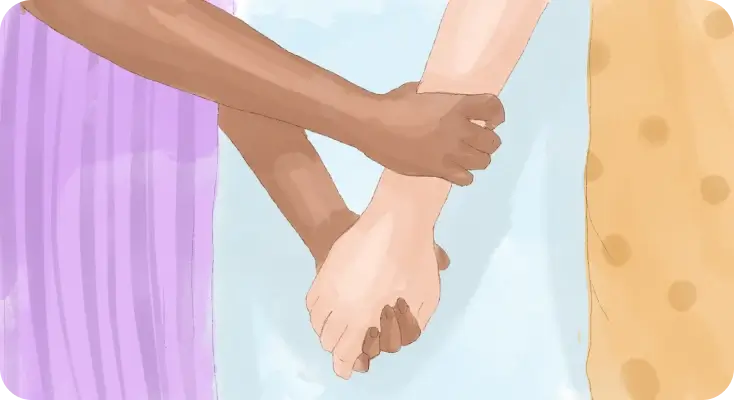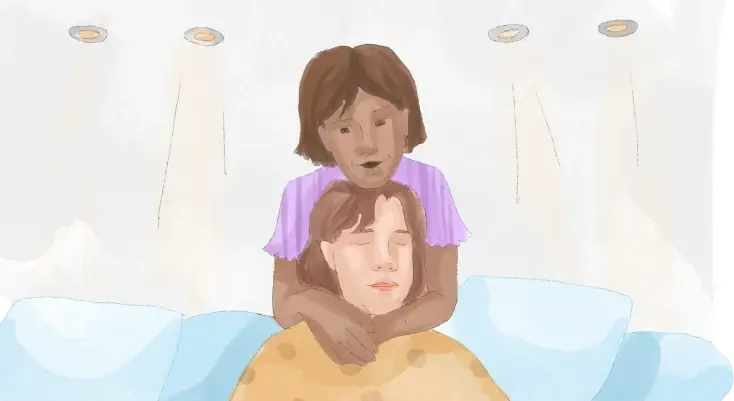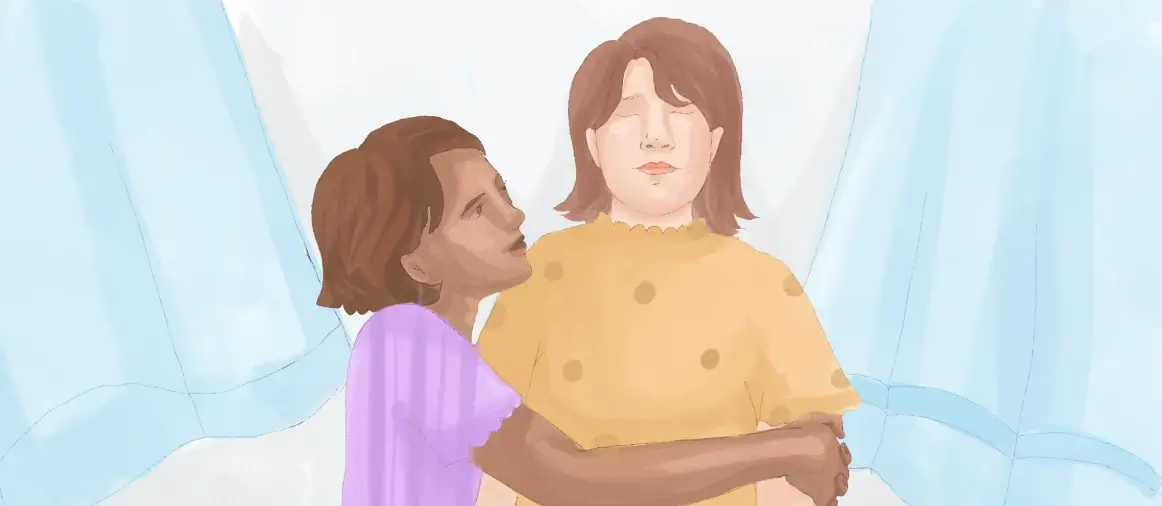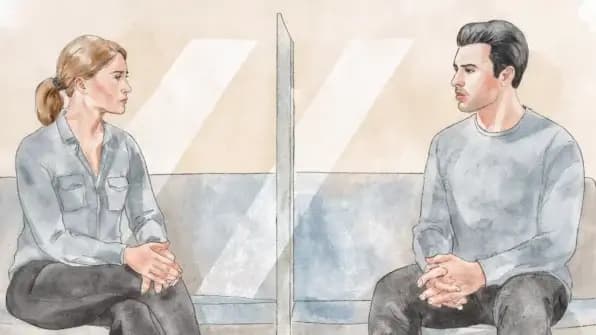What is anxious attachment? Often stemming from inconsistent or unpredictable caregiving in early life, anxious attachment can lead to heightened sensitivity and a strong need for reassurance in relationships.
A specific type of anxious attachment is anxious/preoccupied attachment style.
To improve your relationships, you need to understand how attachment issues affect them. Maybe you’ve noticed patterns in your life that raise some questions.
In this article, you will learn about these attachment tendencies. You will also unpack the anxious-preoccupied attachment style and determine how to help yourself through it.
You will also gain valuable perspective about your loved ones. Let’s find you some answers!
What Is Anxious-Preoccupied Attachment?
You may be asking, what is an anxious preoccupied attachment style? Maybe you’ve heard about anxious or avoidant attachment types, but this specific term is unfamiliar.
Simply put, anxious-preoccupied attachment often develops in early childhood when a caregiver inconsistently responds to a child’s needs.
So, this inconsistency can make the child anxious about their needs being met. What’s more, the child may feel preoccupied with their caregiver’s availability to them.
11 Signs Of Anxious Preoccupied Attachment In Adults
In a nutshell, adults with this attachment style strongly desire closeness and intimacy in relationships.
This desire is often coupled with fears of abandonment or rejection. Relationship dynamics can be confusing as a result.
Here are some common signs of anxious-preoccupied attachment in adults:
1. Intense Need for Approval
The person constantly seeks reassurance from their partner that they are loved and valued. They may doubt their partner’s feelings and need frequent verbal or physical reassurance. This constant need for affirmation is sometimes perceived as clingy or needy behavior.
2. Fear of Abandonment
The person intensely fears being abandoned or left alone. This fear can lead to clingy behavior and efforts to maintain closeness with their partner. As well, they may fear that their partner will leave them or not be available when needed, causing potential abandonment trauma.
3. Overly Sensitive to Rejection
The overly sensitive person tends to interpret ambiguous situations or behaviors from their partner as signs of rejection or abandonment. They experience heightened sensitivity to any perceived distance in the relationship.
4. High Levels of Emotional Reactivity
The person experiences emotions intensely and may have difficulty self-regulating. They may also experience a cycle of emotional highs and lows in their relationships, where moments of closeness and reassurance temporarily alleviate their anxiety. Still, any perceived distance or conflict triggers intense emotional distress.
4. Preoccupation with Relationships
These people also tend to obsess over their relationships. They may analyze interactions and worry about the relationship’s future. This preoccupation can also lead to overthinking and overanalyzing their partner’s words and actions.
5. Difficulty Trusting
The person has trouble trusting their partner’s intentions. They may test their partner’s commitment or loyalty, seeking constant validation of their importance in the relationship.

6. Tendency to Idealize Partners
The person may idealize their partners early in the relationship. They view them as perfect or the answer to all their emotional needs. This idealization can lead to disappointment if their partner fails to meet these impossible expectations.
7. Feeling Unworthy of Love
Deep down, the person may feel unworthy of love or fear that they are unlovable. This belief can crush their self-esteem.
8.Difficulty Setting Boundaries
The person may have trouble setting and maintaining boundaries in relationships. They often sacrifice their needs and desires to please their partner and avoid conflict.
9. Dependency
Anxious-preoccupied individuals may rely heavily on their relationships for a sense of identity and self-worth. They often feel incomplete or inadequate without a close relationship.
10. Emotional Intensity
They experience emotions intensely and can be very expressive about their feelings. Their mood can be highly dependent on the status of their relationships. At times, other people may describe the intensity as overly emotional.
11. Hypervigilance
These people tend to be hypervigilant to signs of potential relationship issues. They often interpret ambiguous situations as evidence of a partner’s lack of interest or love.
Avoidant vs. Anxious Attachment
The following chart outlines the differences between avoidant and anxious attachment styles. Discover how each attachment style impacts each area of relating to others:
| Avoidant Attachment | Anxious Attachment | |
| Emotional Expression | Suppress and hide emotions | Intensely expressive and dependent on emotional feedback from others |
| Need for Closeness | Avoids closeness and intimacy | Craves closeness and fears abandonment |
| Dependency | Values their independence and avoid relying on others for support | Highly dependent on others for validation and support |
| Trust | Distrusts others and doubts their reliability | Has difficulty trusting others due to fear of betrayal |
| Response to Stress | Withdraws and distances themselves from stressors | Seeks reassurance and may become more clingy under stress |
What is Avoidant Attachment Style?
People with an avoidant attachment style value independence and self-reliance. They often prefer to solve problems independently rather than seek help from others.
Additionally, they tend to maintain emotional distance from others. This distance can manifest as difficulty expressing emotions and reluctance to talk about feelings.
Typically, avoidant attachment styles include dismissive avoidant attachment and fearful avoidant attachment style.
The Cold Mother Syndrome describes a caregiving situation where a parent may provide necessities (food, water, shelter) but struggle to show emotional warmth.
Children who grow up in this environment may develop an avoidant attachment style to cope with the lack of connection and focus on self-reliance instead.
Avoidant people often struggle with intimacy and closeness in relationships. They may feel suffocated or overwhelmed when someone tries to get too close emotionally.
Also, they usually suppress or hide their emotions, both from themselves and others. Avoidant people appear detached or emotionally unavailable. They may also have a cynical or dismissive view of others, which impacts their ability to trust.
What is Anxious Attachment Style?
On the other hand, signs of anxious attachment include excessive worry about being abandoned or not being loved enough. Someone with this attachment type may fear that their partner will leave them or not be available when needed and frequently seek reassurance.
An anxiously attached person experiences emotions intensely and can be very expressive. Their mood can be highly dependent on the status of their relationships. Perceived as clingy or needy, they may often wonder, “Why do I get emotionally attached so easily?”
While they crave closeness, they may also have difficulty fully trusting their partners, fearing betrayal or rejection.

What Causes Anxious Preoccupied Attachment?
Briefly put an anxious/preoccupied attachment style often stems from early childhood experiences and interactions with primary caregivers.
These formative experiences shape one’s internal relationships and attachment working model. Here are some common causes:
- Childhood trauma and inconsistent caregiving. When caregivers are sometimes attentive and nurturing and other times neglectful or unavailable—the child learns that they cannot reliably depend on others for comfort and security. This inconsistency fosters anxiety and a preoccupation with maintaining closeness to the caregiver.
- Overbearing parenting. Caregivers who are overly involved in their child’s life may inadvertently teach the child that they cannot cope independently. This extreme “helicopter parent” style can lead to dependence on the caregiver for emotional regulation. The child may also experience a heightened fear of separation.
- Unpredictable parental behavior. Suppose caregivers exhibit unpredictable behavior due to factors like mental health issues, substance abuse, or high levels of stress. In that case, children may struggle to develop a sense of stability and security in their relationships.
- Separation or loss. Early experiences of separation, loss, or abandonment can contribute to the development of anxious-preoccupied attachment. The child becomes hyper-aware of potential threats to their relationships.
- Emotional unavailability of caregivers. Caregivers who are emotionally unavailable or unresponsive to their child’s needs, whether due to their emotional struggles or other distractions, can lead to the child feeling uncertain about the availability and reliability of support.
- High emotional demands from caregivers. Some caregivers rely on their children for emotional support or validation. For example, narcissistic parents. Their child feels pressured to meet the emotional needs of the caregiver. As a result, the child may develop a preoccupation with maintaining the caregiver’s approval.
Is childhood trauma part of your story? Uncover your trauma score with a Breeze test today.
Anxious Attachment Triggers
Attachment anxiety generally doesn’t appear out of nowhere. It’s rooted in past trauma relationships and isn’t your fault.
Triggers can happen and feel disruptive, reminding you of uncomfortable events. These reminders cause unsettling symptoms of anxiety and fear. Some common anxious attachment triggers include:
- When a partner or loved one seems emotionally or physically distant
- Delayed responses to texts, calls, or messages
- Arguments or disagreements can be perceived as a threat to the relationship
- Ambiguity or uncertainty about where the relationship is headed
- Seeing a partner interacting warmly with others or comparing the relationship to others
- Sudden changes in the usual patterns of interaction, such as spending less time together
- When a partner’s behavior is unpredictable, it can create a sense of instability
- Situations that evoke jealousy or suspicion, such as a partner talking to an ex or spending time with potential romantic interests
- Ambiguous messages or behaviors that suggest both interest and disinterest
- Internal thoughts and doubts about self-worth or deservingness of love
Is There an Anxious Attachment Disorder?
There is not a formal DSM-V diagnosis for anxious attachment disorder, but it doesn’t mean you can’t heal and grow. Anxious attachment shares traits with mental health conditions such as Generalized Anxiety Disorder.
You may be more resilient than you think. Explore a Breeze test today to measure your current well-being.
What Are Relationships With Anxious Preoccupied People Like?
All relationships will have challenges, and attachment style differences are part of many romantic connections.
Someone with this attachment type wants to connect but may need support and patience. Thankfully, many people experience anxious preoccupied attachment style healing.
It’s helpful to know a bit about this to improve your relationships. Relationships with anxious preoccupied people are possible and can even be wonderfully healthy. Things to keep in mind for your relationship with an anxious-preoccupied partner include the following:
- Intimacy and Dependency: While anxious-preoccupied individuals seek intimate relationships, their dependency and need for constant reassurance add strain.
- Conflict and Misunderstanding: Their fears and anxieties can lead to conflicts and misunderstandings with partners. Partners may feel overwhelmed by their neediness or confused by their emotional intensity.
- Self-fulfilling Prophecies: The partner’s fear of abandonment can sometimes lead to behaviors that push partners away, creating a self-fulfilling prophecy.
How To Deal With Anxious Preoccupied Attachment
Finally, how you attach to things is very important to become aware of. You can understand the roots of your fears and anxieties with increased self-awareness. Similarly, it’s helpful to learn about the attachment styles of your loved ones.
Learning and practicing practical communication skills can help you express your needs. Understanding these triggers can also help individuals with anxious attachment patterns recognize and manage their responses more effectively.
Therapy and open communication with partners can also be beneficial in addressing these triggers and building healthier relationship dynamics.
Next, learning how to meet your emotional needs independently is empowering. With practice, you can reduce your dependency on others for validation and learn how to self-soothe anxious attachment.
You are capable of learning how to move from anxious to secure attachment. It takes time, but building stronger relationships is possible!
Disclaimer
This article is for general informative and self-discovery purposes only. It should not replace expert guidance from professionals.
Any action you take in response to the information in this article, whether directly or indirectly, is solely your responsibility and is done at your own risk. Breeze content team and its mental health experts disclaim any liability, loss, or risk, personal, professional, or otherwise, which may result from the use and/or application of any content.
Always consult your doctor or other certified health practitioner with any medical questions or concerns
Breeze articles exclusively cite trusted sources, such as academic research institutions and medical associations, including research and studies from PubMed, ResearchGate, or similar databases. Examine our subject-matter editors and editorial process to see how we verify facts and maintain the accuracy, reliability, and trustworthiness of our material.
Was this article helpful?






